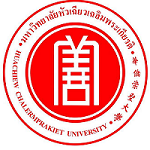Please use this identifier to cite or link to this item:
https://has.hcu.ac.th/jspui/handle/123456789/4068| Title: | Curcumin analogues inhibit phosphodiesterase-5 and dilate rat pulmonary arteries |
| Authors: | Oraya Kruangtip Krongkarn Chootip Prapapan Temkitthawon Kanokwan Changwichit Thipphawan Chuprajob Chatchawan Changtam Apichart Suksamrarn Nantaka Khorana C Norman Scholfield Kornkanok Ingkaninan กรองกาญจน์ ชูทิพย์ ประภาพรรณ เต็มกิจการ ทิพวรรณ จูประจบ ชัชวาลย์ ช่างทำ อภิชาต สุขสำราญ นันทกา โกนารา กรกนก อิงคนินันท์ Naresuan University. Faculty of Pharmaceutical Sciences and Center of Excellence for Innovation in Chemistry Naresuan University. Faculty of Pharmaceutical Sciences and Center of Excellence for Innovation in Chemistry Naresuan University. Faculty of Pharmaceutical Sciences and Center of Excellence for Innovation in Chemistry Naresuan University. Faculty of Pharmaceutical Sciences and Center of Excellence for Innovation in Chemistry Naresuan University. Faculty of Pharmaceutical Sciences and Center of Excellence for Innovation in Chemistry Huachiew Chalermprakiet University. Faculty of Science and Technology Ramkhamhaeng University. Faculty of Science Naresuan University. Faculty of Pharmaceutical Sciences and Center of Excellence for Innovation in Chemistry Naresuan University. Faculty of Pharmaceutical Sciences Naresuan University. Faculty of Pharmaceutical Sciences and Center of Excellence for Innovation in Chemistry |
| Keywords: | Curcumin analogues ขมิ้นชัน Pulmonary artery หลอดเลือดแดงปอด Pulmonary hypertension ความดันเลือดสูงในปอด Phosphodiesterase-5 |
| Issue Date: | 2015 |
| Citation: | J Pharm Pharmacol 2015 Jan;67(1):87-95 |
| Abstract: | Objectives: Phosphodiesterase (PDE)-5 inhibitors are useful as vasodilators for the treatment of pulmonary arterial hypertension. We aimed to study curcumin analogues for PDE5 inhibitory activity and vasorelaxation of rat pulmonary arteries. Methods: Three natural curcuminoids (1-3) and six synthetic analogues (4-9) were tested for PDE5 and PDE6 inhibitory activities using enzymatic radioassay. Their vasorelaxation was measured using freshly isolated segments of rat pulmonary artery and aorta. Key findings: Curcuminoids (1-3) mildly inhibited PDE5 (half maximal inhibitory concentration (IC50 ) = 18 µm): the metamethoxyl of curcumin was important for PDE5 inhibition. But hydroxyl rearrangements, removing both methoxyls and one ketomethylene, yielded the potent 7 and 9 (IC50 = 4 µm) (compared with sildenafil, IC50 = 0.03 µm). Only 1, 3 and 4 were PDE5 selective over PDE6. Triazole-carboxylic addition provided water-solubility while preserving potency. All analogues possessed concentration-dependent vasorelaxant activity on pulmonary arteries (40% of maximal effective concentration (EC40 ) = 29-90 µm, maximum response = 60-90% at 300 µm), while compounds (1-8) were weakly acting in aorta (maximum response <40%). Only demethoxycurcumin (2) and analogues 5, 8, 9 had endothelium-dependent actions. Sildenafil was highly potent (EC40 = 0.04 µm) and highly endothelium dependent in pulmonary artery but weak on intact aorta (EC40 = 1.8 µm). Activity profiles suggest actions through additional cell pathways for promoting vasorelaxation. Conclusions: Curcumin analogues are potential leads for developing efficacious and selective PDE5 inhibitors and other pathologies of pulmonary hypertension. |
| Description: | สามารถเข้าถึงบทความฉบับเต็ม (Full Text) ได้ที่ : https://pubmed.ncbi.nlm.nih.gov/25176340/ |
| URI: | https://has.hcu.ac.th/jspui/handle/123456789/4068 |
| Appears in Collections: | Science and Technology - Articles Journals |
Files in This Item:
| File | Description | Size | Format | |
|---|---|---|---|---|
| Curcumin-analogues-inhibit-phosphodiesterase-5 .pdf | 65.86 kB | Adobe PDF | View/Open |
Items in DSpace are protected by copyright, with all rights reserved, unless otherwise indicated.
